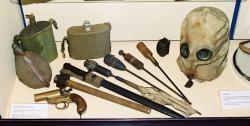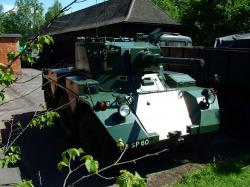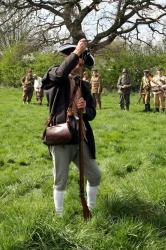Translate this Page
Adwalton Moor
Battle Name : Adwalton Moor
Date(s) : 30 June 1643
Part of : The Civil Wars of the Three Kingdoms , The 1st English Civil War ,
Outcome : A victory for Royalist Forces over Parliamentarian Forces
Type of battle : Land
Summary
A serious defeat for the Parliamentarian army in Yorkshire when the Duke of Newcastle's army routed and scattered Lord Fairfax's army after a fierce cavalry action followed by a charge of pike which broke the roundhead flank.
Location
5 miles east of Bradford, Yorkshire, England (England)
More details
The Royalists commanded by William Cavendish, Duke of Newcastle with a fielded army of 10,000, intended to eliminate the Parliamentarian presence in Yorkshire. The Parliamentarians , under Sir Ferdinando Fairfax, only consisted of 4,000 men.
Newcastle moved to attack Bradford, held by Lord Fairfax, from the east but when he heard that the Parliamentarians were coming to meet him, the Royalists were formed up on a ridge near the village of Adwalton.
Even though the Roundheads were greatly outnumbered they thought to contest the ridge and after forcing back the Cavalier's Forlorn Hope before the village, they deployed in classic formation with the horse on the flanks and the reserve under Lord Fairfax to the centre rear.
Much of the rest of the day consisted of cavalry charges and counter-charges with both sides holding their own, particularly the Parliamentarian right flank under Sir Thomas Fairfax who deployed his musketeers and dragoons using hedges as cover. The day even seemed to be going Lord Fairfax's way as Newcastle had began to doubt his ability to break through on that day and made to retire when a Royalist colonel made a final, impetuous charge with his pike block against the roundhead left flank. The flank crumpled, Royalist reserves poured in and the route began.
Royalist casualties were light, but Parliamentarian casualties were heavy. Up to 2,000 killed, wounded, captured and missing.
The Parliamentary army was destroyed, leaving Yorkshire, except for Hull, under Royalist control. While small in scale, the battle had important strategic consequences. Parliament, its fortunes at their lowest ebb, concluded the Solemn League and Covenant with the Scots on 25th September. Under the terms of this the Scots agreed to supply military support in return for subsidies and the virtual establishment of the reformed religion throughout Britain. The arrival of Scottish troops in January 1644 radically altered the complexion of the war in the North of England.
[Additional details supplied by Chris Auckland of Thomas Wentworths Regiment of the Sealed Knot]
Casualty figures
Royalist Forces
- Number engaged :
- 9,000
- Casualties :
- n/a
Parliamentarian Forces
- Number engaged :
- n/a
- Casualties :
- n/a






